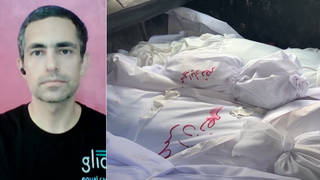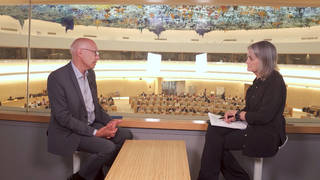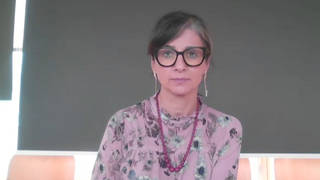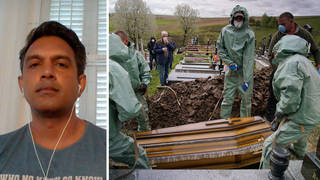
As India faces 1 million new COVID-19 infections every three days, we look at how more infectious variants have been linked to a spread in cases. The so-called India variant has now been detected in at least 19 countries. “This virus behaves differently now, in that it’s much more infectious,” says Dr. Priya Sampathkumar, an infectious disease physician at the Mayo Clinic.
Transcript
AMY GOODMAN: This is Democracy Now!, democracynow.org, The Quarantine Report. I’m Amy Goodman, with Nermeen Shaikh, as we turn now, to continue with India, to look at the devastating situation there, looking at the reasons behind this lethal second wave and what can be done to help bring it under control. As in other countries, more infectious COVID-19 variants have been linked to a spread in cases. The so-called India variant has now been detected in at least 19 countries.
To explain this, we’re joined by Dr. Priya Sampathkumar, an infectious disease physician at the Mayo Clinic.
Doctor, welcome to Democracy Now! Thank you so much for coming on. Explain these variants in India and how they’ve contributed to this COVID storm.
DR. PRIYA SAMPATHKUMAR: So, India did very, very well with the first wave last year, compared to many other countries. And cases peaked and then came down fairly quickly, and then there’s been a plateau. So, cases have been occurring at a low level for several months. And the coronavirus has done what all viruses do. These viruses tend to mutate over time. And if they have, they accumulate enough mutations, they then behave differently, giving rise to what’s called a variant.
So, the India variant is now widely reported as being present in many parts of the country. And the other variant that’s also circulating in India is the U.K. variant. And between them, these two variants probably make up the majority of the virus that’s circulating. This virus behaves differently now, in that it’s much more infectious. And it’s still not known whether it’s also perhaps causing more severe disease, causing disease but presents in different ways, and whether it is causing more deaths, simply because there’s not enough information. We need a lot more testing than is happening now, and not just regular testing of individual cases, but sequencing, to understand how the virus is mutating.
NERMEEN SHAIKH: So, could you talk about, Dr. Priya, why it is that you think the death rate has gone up so exponentially, not to mention the infection rate? We don’t know, as you said, whether the variants are responsible for deaths. Talk about the absence of crucial medical supplies and what else you think — what the reasons are for why the second wave is so widespread.
DR. PRIYA SAMPATHKUMAR: So, there’s several reasons why the second wave is so widespread. First is, the variants are much more infectious. So, when there’s one case, there are many more people infected from that one case than from the original strain of the virus. The second thing is behaviors. People have completely relaxed their guard. In the last few months, there has been really very little masking in India and huge, huge gatherings. So, these have essentially been superspreader events, and the virus is now just raging across the country. So those are the two really big reasons.
As far as the death rate, even if this variant strain was not causing more deaths than before, the previous strain of the virus, the medical system is now completely overwhelmed. We know, from our own experiences in the United States, which is really, really resource rich compared to India — but when we had the surge in New York, what happened was there was a huge influx of cases into the hospitals. Hospitals are at their best when things are controlled and nurses and doctors can do everything they’ve been trained to do to take care of patients. When the numbers of patients coming in overwhelms the system, everything breaks down, despite the best of intentions. Even if you have medications, even if you have ventilators, even if you have oxygen, you can’t have enough staff to take care of all these people. You don’t have enough triage facilities to ensure that the sickest people get care immediately. So, even in the absence of a variant, this kind of devastating death toll is inevitable when you overwhelm medical systems.
AMY GOODMAN: Dr. Priya Sampathkumar, we want to thank you for joining us, from the Mayo Clinic, infectious disease physician there.













Media Options